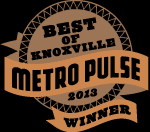
A life-force permeates old buildings. From the materials made by forgotten hands to the lives and labor that existed within its walls, the air swirls with stories. All the old buildings and, with them, their stories, can’t be saved. Thanks to The Christman Company, McCarty Holsaple McCarty and a host of supporting organizations and governments, the Sanitary Laundry Building at 625 North Broadway will live to see another day—and in some respects, perhaps, its best days lie ahead.

The property, vacant and languishing for over three decades, provided a home to Sanitary Laundry, an industrial dry-cleaner (where Eddie Mannis of Prestige Cleaners got his start) from its construction in 1925, to the closure of the company in 1993. The chemicals and compounds left on site because of the nature of the business served to discourage any future tenants or developers. Until now.
The building which once featured amazing natural light from massive windows on the front and the rear will see those architectural highlights lovingly restored. The beautiful brick exterior will be tuck pointed, making it as vibrant and beautiful as its original state. Internally, the open floor with its soaring ceilings will remain, while terra cotta details from the original will be restored.





The Christman Company has been involved in the construction and restoration of some of our most iconic structures, including the Sunsphere and Neyland Stadium. McCarty Holsaple McCarty (MHM), one of Knoxville’s oldest and most respected architectural firms, purchased the building in January, beginning construction immediately on what will become their new headquarters, along with other tenants. They ambitiously hope to begin moving into their space this fall.
Nathan Honeycutt, architect with MHM led a tour of the building for media and assorted VIPs, and the first thing that hit everyone was the enormity of the building. The environmental victory of avoiding filling a landfill and then replicating materials only represents the beginning of the environmental impact of the project. Honeycutt explained, “We plan to seek LEED, WELL and Net Zero certifications to demonstrate not only that the building is energy efficient, but also that it will meet the highest standards for human health from water to air quality. The goal is for this to be the first building in East Tennessee to have both LEED and WELL certifications and it will likely be the first in the state to have all three.”



An explanation of the three certifications from the press release:
Leadership in Energy and Environmental Design (LEED) certification is a globally recognized standard for a building’s environmental sustainability. WELL Certified™ spaces have been evaluated on nearly 100 occupant health metrics, from the effectiveness of ventilation to moisture management. Net Zero Energy Building (NZEB) designation verifies that a building produces as much energy as it uses in a year.
Honeycutt described the building as originally built as being “a beacon of environmental responsibility” since the design required very little artificial light inside. “We felt both as a company, that being one of our core values, and the building’s history, it was important to preserve that for this structure for a new age.” A major portion of making the building “net zero,” or producing as much energy as it consumes, “We’re going to have 10,000 square feet of solar panels on the roof, working with Solar Alliance.” The company estimates the panels will pay for themselves through energy savings in about five years and wants to demonstrate to potential clients that solar is not only environmentally responsible, but economically beneficial.




In addition to repairing or appropriately replacing the surviving architectural elements of the building, a new staircase will be added from the lobby to the basement. MHM drew on their experience with the Maker Exchange to bring a similar stairwell design, complete with a mural, to the new space. A lift will also be added, making the basement handicap accessible. The cement floor will be ground and polished, but will remain exposed concrete, which is consistent with the industrial feel of the building.
According to Honeycutt, the design strives to both modernize the facility, while paying homage in small ways to its history. Sound baffling will extend from the ceiling (as seen in the rendering), for example, mimicking the laundry that once might have hung in the building. “What’s new is very respectful of the history of the building . . .” The main studio space will be open throughout, with flex furniture and many plants to soften the space. The interior brick will be painted, as was the case originally.
MHM will occupy about half the fully renovated space for its offices and is actively looking for tenants to occupy the remaining 17,000 square feet. Most of the tenant space will be in the basement, with its own exterior entrance to the rear. A bay of windows along the back will add natural light, as well as light traveling through the open stairwell. The space may be subdivided into 4,000 to 5,000 square feet sections.



While the building sits adjacent to both the Broadway and Central Street corridors, with excellent bus service, it is also easily accessible by bicycle. For cars, about thirty spaces will be located behind the building, adjacent to the old Bar Marley building (or boiler room if you go further back). The backside will also include an outdoor patio space.
In addition to dedicated and shared office spaces, the project will include common spaces available to all tenants, including a fitness facility, large conference room, and a community café. The new building will be called The 625 Collective. When MHM moves in this fall, they will be celebrating their 60th anniversary as a company and the building’s first 100 years.


National Historic Register status allows the property to qualify for Historic Tax Credits and also requires the building to be returned, as near as possible, to its original appearance and structure. Knox Heritage partnered with the group to help make both the Broadway-facing structure, and the former Bar Marley structure behind it, part of the Emory Historic District on the National Historic Register.” In the case of the Bar Marley building, originally the boiler room for the laundry, tenancy by a restaurant appears most likely.
Christman will oversee efforts to:
- Salvage historic brick for reuse – some original brick will be removed by carefully cutting out each brick, cleaning off mortar and using it to replace damaged brick and rebuild parapet.
- Restore and replace damaged historic terra cotta in entrance lobby.
- Install replica windows to match original historic exterior windows.
- Restore existing interior metal window frames in terra cotta wall and use specialty glaze to replicate original glass.
- Preserve and repair plaster in main lobby.
- Tuckpoint exterior brick masonry – tuckpointing a historic facade requires using a small grinder to cut a groove in center of mortar joint to relieve pressure from the grout so a hammer and chisel can be used to minimize risk of spalling, where a brick peels or flakes.
- Retrofit historic space to meet ADA requirements by using original construction features, such as freight elevator opening and loading ramp.
- Introduce heating and cooling systems while maintaining historic character.
- Install vapor mitigation system under building to address previous life of building.
- Create inviting and intentional courtyard.
Interested in becoming a tenant in the new building? Contact the group at the 625 Collective website.











Recent Comments